#Oji-Cree
Text
Fave Five: Canadian Indigenous Fiction
The Summer of Bitter and Sweet and Those Pink Mountain Nights by Jen Ferguson (YA, Métis)
Into the Bright Open by Cherie Dimaline (YA, Métis)
A Minor Chorus by Billy-Ray Belcourt (Cree)
Jonny Appleseed by Joshua Whitehead (Oji-Cree)
Buffalo is the New Buffalo by Chelsea Vowel (Métis)
Bonus: These are all novels, but for poetry, check out Disintegrate/Dissociate by Arielle Twist, This Wound is a…
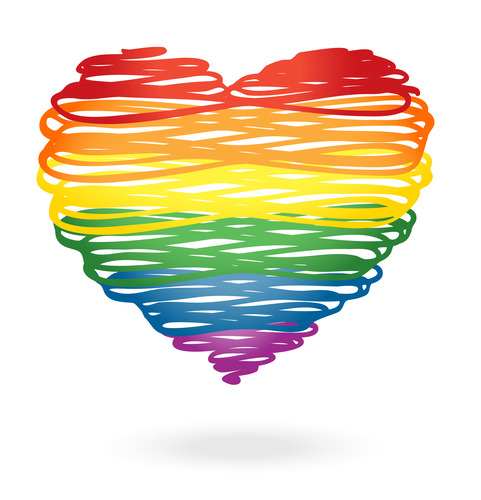
View On WordPress
#A Minor Chorus#Billy-Ray Belcourt#Buffalo is the New Buffalo#Canadian#Chelsea Vowel#Cherie Dimaline#Cree#First Nations#Indigenous#Into the Bright Open#Jen Ferguson#Métis#Oji-Cree#The Summer of Bitter & Sweet#Those Pink Mountain Nights
43 notes
·
View notes
Text
mihkokwaniy
by joshua whitehead
mihkokwaniy
my kokum has many names:
the indian woman
the whitehead lady
a saskatoon female
but my favourite is:
the beauty queen;
they never meant to call her beautiful
what they meant by beauty was:
cheapdirtybrownprostitutedrugaddictalcoholicfirewaterslut
when they write:
“an indian about 35 years old
naked from the waist down
died from asphyxiation
at the queen’s hotel
effects of alcohol
&sedatives”
they don’t mean beauty as in:
mino iskwēw
or: “pleasing the sense or mind aesthetically;
of a very high standard; excellent”
what they mean is
she is beautiful for a squaw in ‘62
she pleases the body
of white men who burn in the loins
for the teal-shade of a browning bruise;
when i type into google
“how to say beautiful in cree”
i get: shaoulle
& when i type that into google i get:
“brutal murder-sex assault case”
seeRE:rinelleharpercindygladuetinafontaine
that’s my grandmother:
she is a mino iskwēw
the beauty queen
a woman with a name:
rose whitehead
&shediedbecauseofit
i read somewhere that saskatchewan
is an economic machine
for producing rape—
seed&honey
& in tisdale you can buy a mug that says:
the land of rape and honey
that’s where my kokum is buried
& her grave is a modest little place
where rabbits visit & sometimes chew
where little dandelions bloom
grant wishes to the wind
to her children who are scattered
across the plains of kanata
looking for a quick fix
& for anger to heal
or at least amend
like it does for a judge
who gifts a man six years
for the death of three women;
i think of my nôhtâwiy
her son who lost his name to a polish man
& felt the sting of day schools
even if priests beat & made honey
with their fists smooshed
into the sweet rot of little brown boys
who liked hockey & lived in suburbs
with whites who made them wait
in the freezing cold
& broke their noses on the ice—
but you’re still not ready to apologize
for that just white yet
my kokum has made many headlines:
“woman found strangled”
being the most consistent
a fifty word article that calls for sympathy
not for the “strangulation death
of the whitehead woman”
but for the man:
steven kozaruk of esterhazy
who “was suffering from the effects
of alcohol and sleeping pills”
even with a “seven-man jury”
& “thirteen witnesses,” lives—
his whiteness is his weakness
(even if its biceps can crack a brown neck like a wishbone)
and that weakness is his innocence;
the life of my kokum is worth:
six years & fifty words;
all these things overlap
interweave, interlay, interplay, interact
penes
|inter|intra|
|probo|capio|vita|
terra|corona|letum|nullius
tansimaslow
my kokum is famous
a real holly golightly
i bet she even eats
fried bologna sandwiches
at tiffanys
aint that right gran?
when i visit your grave
in saskatoon
i see the face of kozaruk
on the prairie scene
fatteninginsuburbia
& here you are
with a rag-tag little monument
made of sticks & leaves
stems from jackrabbits
that seem to visit often
a little blue ribbon
god knows from who
& a sad little brown boy
with a million questions like:
how are you doing?
do you hate klik too?
what would life have been like
if you had lived beyond thirtyfive?
would i be alive?
would the cancers in my dad
not have crept & lived
spelled doom on his skin?
would i be able to speak cree
without having to google translate
this for you?
would you make me cookies
& teach me how to sew back on the limbs
to my plush rabbit floppy ears?
would you call me “m’boy?”
& take me to sundances
powwows, bingo nights too?
would you make sure i feed the rez dogs
when they all come around?
would you make me a jingle dress
cause i want to be a pretty dancer like you—
would you teach me what it means to be two-spirit
tell me i can be a beautiful brown boy in love?
make me say niizh manitoag—feel the power on the tongue?
would you teach me to knead bannock
make life from lard—
a real ratio for reckoning?
hi kokum?
can i call you on the phone?
i promise not to call collect
i just want to hear your voice
tell you i learned what it means
to say i love you
& feel the whole of cree
coalescing in my breath:
kisâkihitin; my god, kisâkihitin
hey gran?
can i ask you something quick?
are you okay up there in godknowswhere?
do you see what we’ve all done?
my dad says these things all happen for a reason
that i wouldn’t be here if they didn’t
hey gran?
i’m sorry—
you know that right?
did you have to die for me to be alive?
heygranheygranheygranheygran
i’ll let you be
& stop being sick’ning
i bet you’re busy
cooking macaroniandtomatosoup
for twelve hundred missing & murdered women,
girls & two-spirit folk
it’s just, am i supposed to hate him, gran?
tell him that with one death
he ruined the lives of an entire family?
i want to tell him that the life of a person
is an archive of memory
& when you he strangled the life out of you
in a queens hotel shoddy little bed
the last gasping breath you exhaled
held in it little particles
fragments of time:
a bay leaf boiling in tomato sauce;
a flake of tuna that a
cat named randy
licked&licked&licked;
the soft cry of a baby boy
plummeting into day;
the smell of sweet grass smudging
monsters from our bedrooms;
tell him: when you kill a memory
you snuff out metaphor
turn off the light in a home;
you destroy a world where children
are nursing still&still;
—& aint that the hardest truth?
to be honest
i’m no aeneas
no marvellous country house poem
no faeryland, no golden world
no chimeric homeric epic
i’m just a little brown boy
queered by his colour
writing for a kokum he’s never met;
but i promise you:
these spaces can transform
an injun into a warrior
who can claw, scrape, fight
who can write on a piece of paper
sign a name instead of an ‘X’
that says, “this is my kokum
& her name is Rose Whitehead;
and she is
beauty queen extraordinaire.”
I dedicate this poem to all missing and murdered Indigenous women, girls, and two-spirit peoples; for their families, friends, loved ones, and kin. We are a collective trauma that demands to be examined, reconciled, resolved, and healed.
Today we survive; tomorrow we resist.
#i need everyone to read this#i'm in vancouver and i didn't bring my copy of full metal indigiqueer so i can't read this in the physical form#but being in vancouver feels so heavy because there is so much loss#vancouver and winnipeg are big for mmiw unfortunately#poetry#indigenous poetry#literature#full metal indigequeer#joshua whitehead#cree#oji-cree#art#indigenous art#indigenous authors#book reccomendations
12 notes
·
View notes
Link
When the City of Chicago entrusted a 15,625-square-foot vacant lot into the hands of urban Native youth and their head auntie Janie Pochel, she feared that their goal to open the city’s first Indigenous garden might never take root.
The land they steward, still in the city’s custody, on the corner of North Pulaski Road and West Wilson Avenue in the northwestern Chicago neighborhood of Albany Park, was an eyesore before they arrived.
Members of the Chi-Nations Youth Council (CNYC) worked tirelessly to clear the property of debris in the fall of 2018, months before the First Nations Garden’s grand opening by next spring. They believed it was an obligation to pass on tribal and inter-tribal knowledge and traditions to the next generation — and to heal the land that their ancestors thrived on a few centuries ago.
“It’s still a fight,” says Pochel, who is First Nations Oji-Cree and serves as CNYC’s lead advisor. “People tried to take the land from us.”
Eventually, they were able to transform the empty, standard five-city lot into more than just a garden. It’s now a safe space, a new home for Chicago’s urban Native youth who feel lost and alienated.
#indigenous youth#native youth#chicago#illinois#indigenous#native american#land restoration#city of chicago#janie pochel#albany park#chi-nations youth council#cnyc#first nations garden#first nations#oji-cree#urban garden#youth empowerment
9 notes
·
View notes
Text
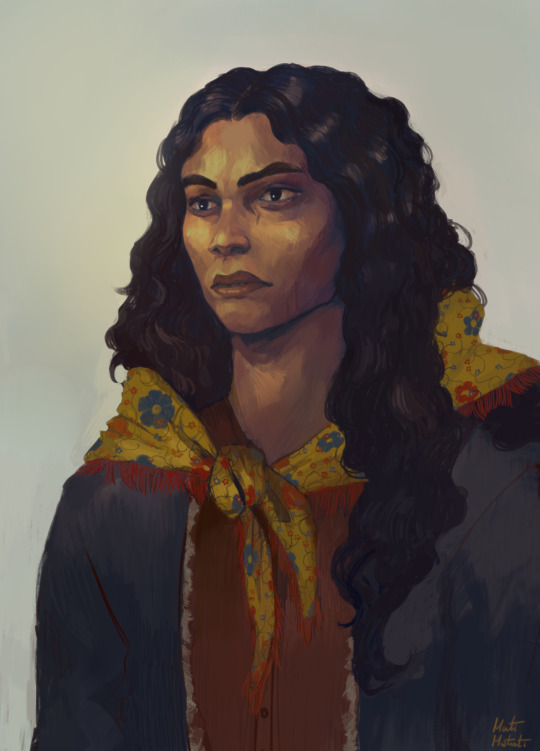
portrait of VENA CAVA by my friend @trashootie / @mutimatuti ! thanks for this lovely depiction of them. :)
12 notes
·
View notes
Text
btw ive decided im gonna apply for membership w the FN that MNO misclaimed my ancestors from. granny has been really excited about it. shes finally feeling connected after 70 years since she left.
#apparently most of my ancestors i believed were Métis were Ojibwe. just misclaimed.#so im cree & ojibwe w some métis ancestry#but the métis ancestors had married into ojibwe and cree households. MNO just claimed all their descendants :/#i still want to connect more w my nish heritage before applying but i have been learning some#it does make sense why so much ofthe small things granny could remember was of the oji-cree cultural overlaps#i wish i had known sooner. in law school i had been tempted to take the ojibwe lang classes bc it was the closest i could come to cree gram#but i actually. could have learned my own language and didnt even realize :(
2 notes
·
View notes
Note
Since you mentioned it in the post, is the Anishinaabe language group the more prefered term for the Ojibwe-Potawatomi continuum of languages, or is it based on how the people themselves identify? Where Anishinaabe is the endonym for the people, rather than Ililî/Nêhiraw/Nêhiyaw/Nêhinaw/Inniw
Thanks in advance.
I'm not entirely sure I understand the question, but "Anishnaabe" is just one way many people who fall under this group identify themselves, it's an endonym. The tribes that fall under this group are also of course very closely linguistically related to each other and can be mutually intelligible, but yes there are other variations of the word "Anishnaabe". It's still an endonym, it's just that saying "Anishnaabe" is just a little less specific than saying something like "Ojibwe" or "Potawatomi", & when they say it they know it also includes other tribes.
#im not Anishnaabe so i dont know the consensus for how exactly popular it is for each group to use this for themselves#but i know its common enough#twinkpsychopomp#again Cree does not fall under the Anishnaabe group UNLESS they are Oji-Cree so the examples you gave wouldnt count
8 notes
·
View notes
Text


indigenous fc's you could consider playing #24
d’pharaoh woon-a-tai
he/him
oji-cree, guyanese, chinese, black, white
20
@ dpharaohwoonatai
#rpt#rph#indigenous fc#native fc#native american fc#oji-cree fc#fc rec#fc of color#asian fc#chinese fc#black fc#guyanese fc
57 notes
·
View notes
Text

Medicine Fox. Carl Ray (Oji-Cree). 1977.
via
2K notes
·
View notes
Text
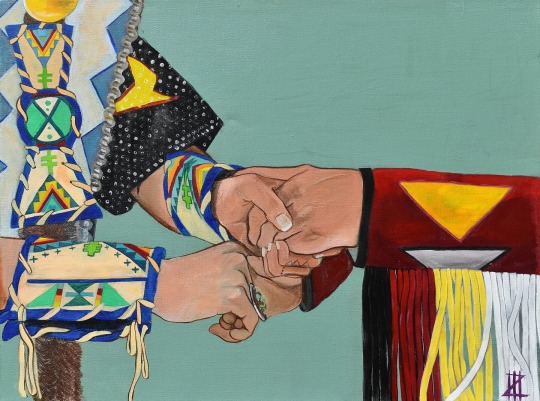
Come and Get Your Love
Monica Zavala (Gabrielino/Tongva Nation, Acjachemen, and Mexican)
acrylic on canvas. 18” x 24”
At vibrant gatherings like Pow Wows, the mesmerizing 2-step dance often takes center stage. In this enchanting dance, partners intertwine their arms and hands, moving in perfect harmony as they follow the lead, creating an expansive chain of synchronized movements. The elegance of this dance is embodied by the graceful couple, Kiara Love Flores, representing the Kuupangaxwichem and Northern Ute heritage, and Mi’de Xxavier McKay Woon-A-Tai, a proud member of the Oji-Cree tribe. Their skilled hands and passionate spirits bring the 2-step to life, weaving a captivating tale of unity and tradition on the dance floor.
75 notes
·
View notes
Text
🪶 / in the source link below, you’ll gain access to #152 gifs of d'pharaoh woon-a-tai in reservation dogs, s03e01-03 (2023). he was born in the year 2001 and is of oji-cree, guyanese (chinese, african), and european descent, so please cast appropriately when using my resources. all of these gifs were made from scratch, so you may edit these as much as you’d like, but please don’t redistribute or claim as your own. please refer to my rules for further information.
note: this pack is completely free and is also accessible through a zip file.
this pack will be updated until all episodes are complete!

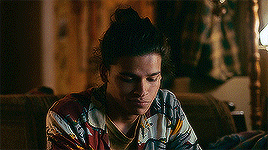

#d'pharaoh woon a tai gif pack#d'pharaoh woon a tai gif hunt#*#*gh.#gh.#d'pharaoh woon a tai.#masc.#actor.#native.#ojibwe.#cree.#guyanese.#black.#african.#asian.#chinese.#poc.
184 notes
·
View notes
Text
my 2s repost the links should lead to archive links <3

Hi I want to apologize for taking so long to respond, I wanted to get my thoughts together, to answer this properly. This’ll be long.
First, it is important that I define to you what exactly I know and see two-spirit as/to be.
I’ll start with the definition from wikipedia:
“Two-spirit (also two spirit, 2S or, occasionally, twospirited) is a modern, pan-Indian, umbrella term used by some Indigenous North Americans to describe Native people in their communities who fulfill a traditional third-gender (or other gender-variant) ceremonial and social role in their cultures.”
What I know the usage of the term two-spirit to be, yes, it is quite an umbrella term. I find it used all over Canada and America by Indigenous youth who identify as trans, AND by those who are LGB. As it is in usage now, it seems to just be the catch-all for any GNC or LGB indigenous kid. A label. And although I do think it’s wonderful for any LGB or T-identified or gender non-conforming Indigenous child to find a label that makes themselves comfortable and makes it easier to find others who have the same life experiences, I also think it’s wrong.
The intention of Two-spirit is meant, as we see in the wiki definition, as a catch-all describer of “traditional third-gender, ceremonial and social role in their cultures” for anybody who is North American indigenous. Anon I’m sure you know already but for those that don’t, our roles, typically, are heavily appointed by Elders. You don’t just identify yourself into performing traditions, you are appointed it by elders, or else you ask for their, for lack of better word, blessing. But… you’d be hard pressed to find much of our culture that does this for a “third gender” or “two spirit”.
I can’t speak for every indigenous culture as I was raised mainly into the Cree part of my family and not the Saulteaux/Oji-Cree, but in Cree culture the word of our Elders is sacred. Oral history is how we learn of our culture, in part because we were hit hard in the Canadian genocide of First Nations. I can very safely say, out of all the things I learned from my elders, the only thing I ever had to “teach” them was what Two-spirit meant and what a third-gender is. Because they didn’t know. They could tell me what life was like before they were taken away from the reservation, they could tell me tales of creatures, of Wendigo and Little People, they could tell me and teach me what is sacred to us, what our roles as male and female are, but they couldn’t tell me what Two-spirit is. I had to learn that from the white man. Why is that? Well… possibly because it’s not a thing. It’s not sacred. It isn’t part of the history.
And even if it is in any subset of our cultures, all these kids and indigenous youth who use 2S to identify themselves? They were not appointed the term by elders, they label it themselves.
I think it is important to note here that “Two-spirit” itself was a term first (as we know so far according to Wikipedia, so take that as you will) founded and pushed out of Winnipeg, Manitoba, Canada, which is Treaty 1 territory, home to Anishinaabe. I am not a part of this territory (although I have Elder family members who are from Sandy Bay, who I can confirm also do not know of two-spirit) but one quick search of “anishinaabe third gender” will even only bring up modern day Two-spirit ideas, and the coining of the term in 1990. Same with any search for “(nation) third gender.” I have had a very lovely Anishinaabe anon in the past, and she has also vented her frustration at the use of the term, especially as an umbrella term for any Indigenous kid who is LGB or T, so I do take some assumption there from her that it is also not much of a thing in Ojibwe culture or any of the other Anishinaabe cultures.
What’s most important, and why I oppose it so much (other than the fact that it’s just, as I see, straight up a white man-made concept) is that the term “two-spirit” was created to replace other, more offensive words.
It’s main replacement is for “berdache”, a white (French) word, used against male Indigenous men, particularly homosexual Indigenous men. It is a slur. “Male berdaches did women’s work, cross-dressed or combined male and female clothing, and formed relationships with non-berdache men.”
It is, also, meant sometimes to replace the word, Winkte, or winyanktehca. Lakota meaning ‘wants to be like a woman’. Particularly used against, again, homosexual Lakota men.
It is, also, sometimes used as a replacement for Nádleehi, which was/is used in Diné culture as a word for effeminate males. Particularly used against, you guessed it, homosexual Diné men.
Now, to me, I think it is pretty plain to see that this is a term meant to replace some of our more homophobic terms used in Indigenous communities. But replacing homophobic terms with new ones doesn’t make it any less homophobic. These terms were meant to other homosexual indigenous men, and they were also used by white people. For us to, in this day and age when our culture is shifting to a less homophobic one, use the term two-spirit to continue to other LGB indigenous people? That’s not right to me. There was no reclamation of any of these terms, there was just a white replacement word that doesn’t sound as bad. But it still means the same thing. It’s still as white as a Frenchman calling a gay Indigenous man berdache.
I could keep going on and on, especially about how it is used in current day culture by indigenous youth as a special label, and how none of the people using it seem to actually have talked to their elders about it, but really my biggest problem with it is just how extremely homophobic it is. And how white people use it as “proof” that transgenderism has “always existed” when those same white people don’t even bother to fucking listen when some of us scream at them how wrong they are. And then I could keep going on screaming about how it’s been shoehorned as an acronym onto Missing and Murdered Indigenous Women which is so fucking disrespectful.
99 notes
·
View notes
Note
hey!
would you be able to suggest some male actors of latina / south american descent? preferably in their twenties?
thank you <3
below are some SOUTH AMERICAN face claims, in their 20s. they are listed in alphabetical order, with their birth years && ethnicities. those in bold are my personal recommendations. please LIKE / REBLOG if you find this useful.
alejandro speitzer (1995, mexican && unspecified other)
andrew matarazzo (1997, brazilian, italian && unspecified other)
benjamin wadsworth (1999, mexican, iranian, swedish, dutch && english)
booboo stewart (1994, argentinian, italian, french-canadian, english, scottish, japanese, chinese && korean)
chance perez (1997, mexican, english && irish)
d’pharaoh woon-a-tai (2001, oji-cree, guyanese, english, irish, german, dutch, chinese && african)
diego tinoco (1997, mexican && colombian)
eduardo franco (1994, mexican)
froy gutierrez (1998, mexican, caxcan && unspecified white)
gabriel conte (1994, cuban && colombian)
gavin leatherwood (1994, mexican, irish, british, german && cherokee)
jake t. austin (1994, puerto rican, argentinian, spanish, polish, english && irish)
lino facioli (2000, brazilian, austrian, italian, portuguese && german)
matt hunter (1998, colombian, scottish && italian)
michael garza (2000, mexican)
nico greetham (1995, colombian && scottish)
noah urrea (2001, mexican, dutch/frisian, english, scottish && german)
omar rudberg (1998, venezuelan)
ricardo hoyos (1995, ecuadorian, peruvian, irish, british, french-canadian && guernsey)
william shewfelt (1995, guyanese, indian && german)
xolo maridueña (2001, cuban, ecuadorian && mexican)
#face help#fc help#face claim help#underused fc#rp help#rph#poc fc#male fc#latino fc#latin fc#south american fc#mexican fc#colombian fc#venezuelan fc#ecuadorian fc#guyanese fc#cuban fc#chilean fc#argentinian fc#brazilian fc
79 notes
·
View notes
Text
the CBC hit job on buffy sainte-marie is truly baffling. the claim is that, because her white parents' names are on her birth certificate, and because she has a younger sister from that same family, who is very much lily-white, she is not legitimately a member of the piapot first nation.
let me use a personal example showing the idiocy of this determination by the CBC. my son is black. once the adoption process went through, he was issued a new birth certificate showing my ex-wife and I as his legal birth parents. we are both white. it is quite obvious that we are not his birth parents, but that's what the birth certificate says (the original birth certificate showing his black parentage is sealed and unavailable except through court order; that how it works).
are you seeing where I'm going with this?
while no one would ever suggest that my ex and I are claiming our son is white, many in the first nations are "white-passing" (you can decide for yourself if you think buffy "passes").
she has always claimed that she doesn't know with certainty her true ancestry, and ultimately understood that she was adopted as an infant, tracing that back to saskatchewan (buffy says this is because her adoptive mother ultimately straight-up told her she was adopted from an unwed mother somewhere north of the piapot first nation).
the CBC also points to inconsistencies in how buffy's heritage was documented in the press, though they're not really inconsistencies. their investigation states that some referred to her as cree (the piapot nation is cree), algonquin (the anishinaabe language group that extends into the canadian prairies includes algonquin and oji-cree), or half-mi'kmaq (her adoptive mother, while white-passing, did actually claim connection to the mi'kmaq, so even that isn't inconsistent if that was before she knew about being adopted from saskatchewan).
claiming that her adoptive white parents *must* be her birth parents is erasure of that [possible/probable/whatever] first nations heritage; it's pure and simple racism (and if you're shocked by racism against the aboriginal community in canada, you're ignoring the country's entire history and present-day situation).
that she has a younger sister or a second cousin who know nothing of a possible connection to the piapot first nation doesn't really mean a damn thing—if buffy was raised as white, then that's all that her younger sister would've known; you can't blame buffy for her sister being kept in the dark.
all that the CBC investigation does is confirm what buffy sainte-marie has always said, which is that she doesn't know with certainty who her birth parents are, and provide yet another example of the mess that interracial adoptees face in figuring out their cultural heritage.
[also, regardless of her birth, she was adopted as an adult into the piapot first nation 60 years ago (they didn't have a problem doing so), which legitimates her status. she has spent her adult life connecting to that first nation and working to support aboriginal recognition and rights.]
[EDIT: Yes, it could be a big lie. I didn't feel that the evidence proved anything beyond a doubt, and to my knowledge her parents never actually denied her supposed Cree ancestry—Albert Santamaria died in 1998; Winifred in 2010. The information about the birth certificate hit home with me as an adoptive parent. I wouldn't understand her motivations if it is all a lie.]
31 notes
·
View notes
Photo
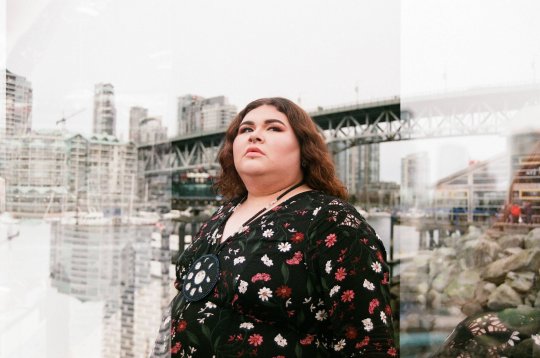
Jaye Simpson
Gender: Transgender Non binary (they/them)
Sexuality: Queer
DOB: N/A
Ethnicity: First Nation (Oji, Cree, Saulteaux)
Nationality: Canadian
Occupation: Writer
#Jaye Simpson#lgbt#lgbtq#enby#bipoc#transgender#non binary#queer#first nation#native#biracial#poc#canadian#writer#plus size
79 notes
·
View notes
Photo

The state of Indigenous languages in Canada
by u/throwbarrieaway
There are 243,155 people in Canada that were recorded as being able to speak an Indigenous language in the 2021 census. This is 0.67% of the total population of Canada. However, this is still 100k more than the population with an Indigenous first language. Centuries of oppression have resulted in the decline of Indigenous languages in Canada, and revival efforts exist today among generations that did not grow up speaking the language.
The top 9 Indigenous languages in Canada are:
Cree (an Algonquin language) with 87,875 speakers. Called a language, group of languages or a language continuum, most Cree speakers in Canada simply say they speak Cree.
Inuktitut (an Inuktut language) with 41,680 speakers. The main language of the Inuit in Canada, and the only language other than English or French spoken by a majority in a province or territory.
Ojibway (an Algonquin language) with 26,165 speakers. Similar to Cree, Ojibwe (or Ojibway in the census) has many dialects, though most identify with the language as a whole.
Oji-Cree (an Algonquin language) with 15,305 speakers. Also called Severn Ojibwe, this is an "Ojibway-Potawotami language" language/dialect kept separate from the rest in the census.
Dene (an Athabaskan language) with 11,555 speakers. Also called Denesuline or Chipewyan, spoken mostly in the northern half of Saskatchewan, it is arguably the top language there depending on how you measure Cree.
Innu (an Algonquin language) with 10,745 speakers. The main language of the Innu of Northeastern Quebec and Labrador.
Mi'kmaq (an Algonquin language) with 9,245 speakers. Mi'kmaq is an Eastern Algonquin language of the Maritime Provinces.
Blackfoot (an Algonquin language) with 6,685 speakers.
Atikamekw (an Algonquin language) with 6,815 speakers. In the Cree-Innu group, spoken mostly in the Saint-Maurice watershed north of Montreal.
Full stats can be explored in this table:
https://www12.statcan.gc.ca/census-recensement/2021/dp-pd/prof/details/page.cfm?LANG=E&GENDERlist=1&STATISTIClist=1&DGUIDlist=2021A000011124&HEADERlist=18
Note on "Insufficient Speakers". Stats Canada has an anonymity filter on all data that turns any response below 10 people to 0. So, in the top right map that means less than 10 speakers of an indigenous language. In the main map that means less than 10 speakers of an individual language family, and the unstriped Algonquin divisions have less than 10 speakers of one of the four individual subgroups.
Source: Census 2021, Knowledge of Languages by Census Division. Tools: QGIS, Excel
195 notes
·
View notes
Text
Since ppl seem to keep spreading misinformation & using the wrong terms on here, here's a chart:
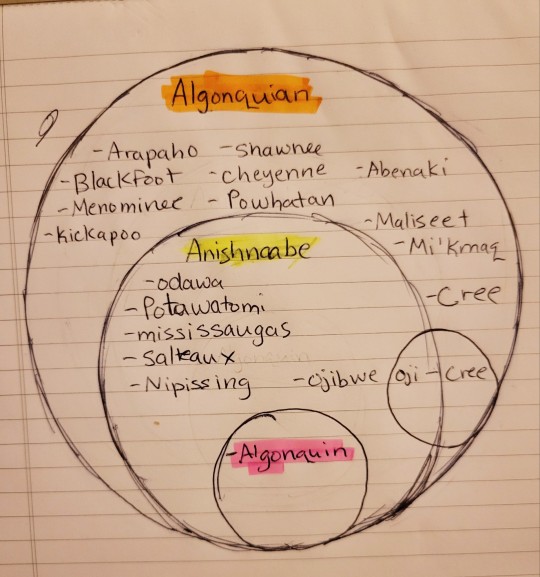
[Image description: photo of a venn diagram drawn on lined paper. There are 3 circles. The largest is labeled "Algonquian" & highlighted in orange marker, with the following languages written inside of it but not inside the other circles: "Arapaho, Blackfoot, Menominee, Kickapoo, Shawnee, Cheyenne, Powhatan, Abenaki, Maliseet, Mi'kmaq". The second, medium sized circle sits within the largest circle & is labeled "Anishnaabe" & highlighted in bright yellow, with the languages "Odawa, Potawatomi, Mississaugas, Salteaux, Nippising, & Ojibwe" written inside the second circle". The language "Oji-Cree" is labeled inside its own small circle intersecting with the Algonquian & Anishnaabe circle. Finally, the smallest circle is at the bottom & is inside the se one largest circle which is also inside the Algonquian circle. The smallest circle is labeled "Algonquin" & highlighted in pink. End description]
"Algonquian", ending with an "-uian", is a language family, with multiple languages & tribes that fall under it. The languages listed here is not exhaustive, & there are more Algonquian languages than listed here.
"Anishnaabe" is a group of culturally related tribes that lived near the Great Lakes region & were allied with each other, and all happen to fall under the Algonquian language family. Anishnaabe does not only exclusively refer to the Ojibwe tribe or language, though they often use this to refer to themselves. Not all Algonquian tribes fall under the "Anishnaabe" group, such as the Cree (except in the case of Oji-Crees), or Blackfoot.
"Algonquin", ending with just "-uin", is a singular tribe and language that is both in the Algonquian language family, as well as a part of the Anishnaabe language group.
2K notes
·
View notes